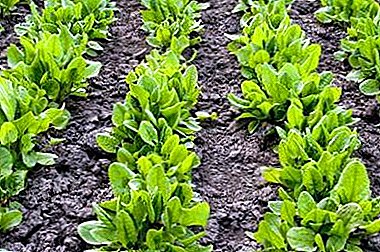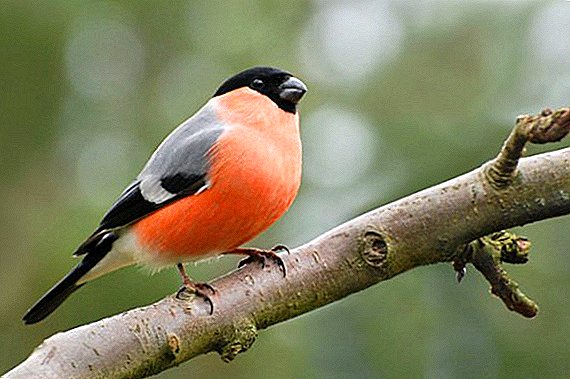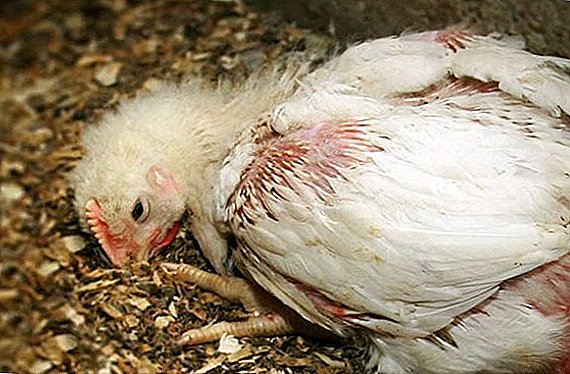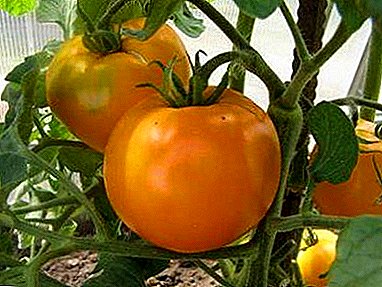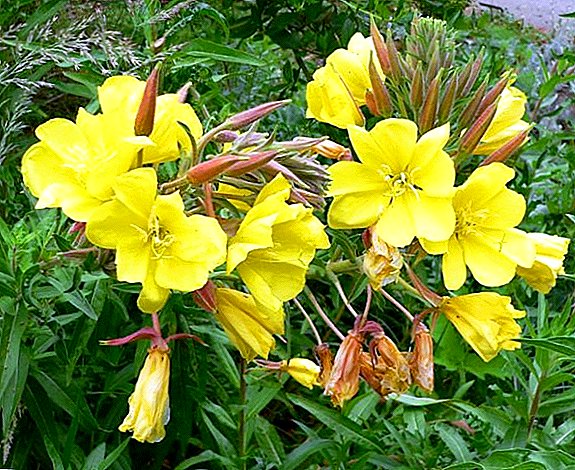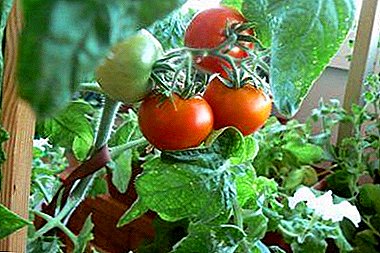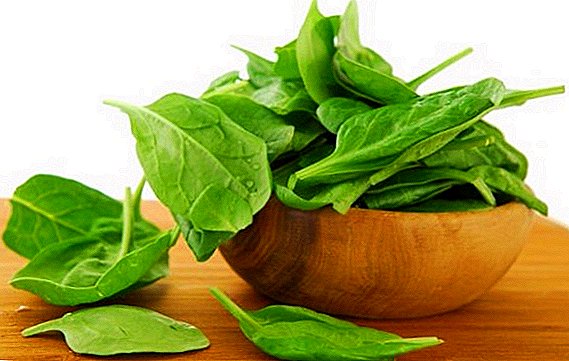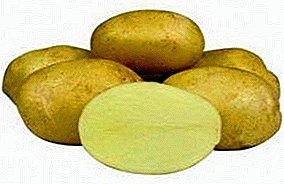
"Jelly" - potatoes are tasty, beautiful, healthy, according to the description of an unusual rich yellow color.
It is good for sales or culinary experiments, and high yields will delight both the farming farmer and the gardener amateur.
Read in our article a detailed description of the variety, get acquainted with its characteristics, study the photos, learn everything about diseases and pests.
Jelly Potatoes: variety description, photo
| Grade name | Jelly |
| general characteristics | medium yield table variety of high yield |
| Gestation period | 90-110 days |
| Starch content | 14-18% |
| Mass of commercial tubers | 80-140 gr |
| The number of tubers in the bush | up to 15 pcs |
| Yield | up to 550 kg / ha |
| Consumer quality | excellent taste, not darker when cooked, suitable for cooking fries and soups |
| Recumbency | 86% |
| Skin color | yellow |
| Pulp color | dark yellow |
| Preferred growing regions | any area suitable for growing potatoes |
| Disease resistance | moderately susceptible to phytophthora and viruses |
| Features of growing | moderately moist soil preferred |
| Originator | EUROPLANT PFLANZENZUCHT GMBH (Germany) |
- tubers are large, weighing from 80 to 140 g;
- round-oval shape;
- tubers are even, neat, identical in size;
- the peel is yellow, evenly colored, smooth, slightly rough;
- eyes superficial, shallow, few and barely visible;
- pulp on cut dark yellow;
- average starch content ranges from 14 to 18%;
- high content of protein, vitamins and microelements.
You can compare the weight of tubers and starch content with other varieties in the table below:
| Grade name | Tuber weight (gr) | Starch content (%) |
| Jelly | 80-140 | 14-18 |
| Laura | 90-150 | 15-17 |
| Tuleyevsky | 200-300 | 14-16 |
| Vega | 90-120 | 10-16 |
| American | 80-120 | 14-18 |
| Ladoshka | 180-250 | 13-16 |
| Caprice | 90-120 | 13-17 |
| Cheri | 100-160 | 10-15 |
| Serpanok | 85-150 | 12-15 |
Visually familiar with the variety of potato "Jelly" is possible in the photo below:





Characteristic
Potato "Jelly" refers to the mid-early dining. The first tubers can be harvested at the end of June, but the variety reaches its maximum yield by the end of the growing season (about 90 days). Productivity depends on climatic conditions and nutritional value of the soil. From 1 hectare can be collected from 156 to 292 quintals, maximum productivity reaches 500 centners. How to grow early varieties of potatoes, read here.
This yield makes the variety ideal for industrial cultivation. Collected tubers are well keptwithout losing the presentation for several months.
Read more about the time and temperature of storage, about possible problems. And also about how to store potatoes in the winter, on the balcony, in the refrigerator, peeled, in boxes.
In the table below you will find such characteristics as yield and keeping quality of different potato varieties:
| Grade name | Yield (kg / ha) | Stability (%) |
| Jelly | up to 550 | 86% |
| Molly | 390-450 | 82% |
| Luck | 420-430 | 88-97% |
| Latona | up to 460 | 90% |
| Kamensky | 500-550 | 97% |
| Zorachka | 250-316 | 96% |
| Arosa | up to 500 | 95% |
| Felox | 550-600 | 90% |
| Alvar | 295-440 | 90% |
Bush high or medium, upright, sprawling. The leaf is medium, the leaves are large or medium, dark green, with slightly wavy edges. Depending on the type of bush leaves can be intermediate or open.
The corolla is compact, assembled from large white flowers. Berries a bit. Each bush gives 10-15 large, flat tubers. The amount of non-competitive stuff is minimal. Agrotechnical requirements are standard.
The variety calmly tolerates weathering, does not respond to short-term drought and heat. Frequent hilling and timely removal of weeds using mulching after this is recommended. Before sowing, complex mineral fertilizers are introduced into the soil.
Read more about how to feed potatoes, when and how to apply fertilizer, how to do it when planting. We also bring to your attention interesting materials on how to grow crops without hilling and weeding, how to organize watering correctly and in which countries potatoes are most popular.
Potatoes are resistant to mechanical damage, for greater preservation of tubers on industrial fields it is recommended to use side-harvesters.
Sort resistant to many typical diseases Solanaceae. "Jelly" does not suffer from potato cancer, nematode, black leg, common scab. To protect against late blight, it is advisable to use copper-containing drugs. Tubers do not degenerate, seed can be collected annually.
Read also about Alternaria, Fusarium, Verticillium wilt.
Jelly potatoes are nutritionally and have a pleasant, non-watery taste. Tubers when cutting do not darken, a beautiful yellowish tint remains after preparation. The dense, not boiling soft pulp is ideal for filling soups, cooking french fries and vegetable chips.
Origin
 Jelly potato variety bred by Dutch breeders. Included in the State Register of the Russian Federation in 2005.
Jelly potato variety bred by Dutch breeders. Included in the State Register of the Russian Federation in 2005.
Zoned in the Central and Volga-Vyatka region, it is possible to grow in other areas with a temperate and warm climate. The grade is recommended for industrial cultivation, farms.
Potatoes are suitable for amateur gardeners. High-quality seed potatoes "Jelly" may be stored for several seasonswithout losing germination.
Advantages and disadvantages
Among the main advantages of the variety:
- excellent taste of root vegetables;
- high yield;
- large tubers are aligned in weight and size;
- the possibility of long-term storage without loss of commercial quality;
- suitable for industrial or recreational cultivation;
- drought tolerance;
- responsiveness to feeding;
- lack of care;
- resistance to major diseases.
Disadvantages practically no potato varieties. The only feature - dense tubers with low starch content are not suitable for mashing.
Features of growing
 Potato varieties "Jelly" is not too picky to care. is he prefers light fertile soils with a high content of sand.
Potato varieties "Jelly" is not too picky to care. is he prefers light fertile soils with a high content of sand.
Potato "Jelly" and the characteristic of the variety allows you to periodically change areas for planting, alternating potatoes with phacelia, radish or legumes.
Before planting, the soil is cultivated with a cultivator, carefully selecting the forgotten tubers and plant remains from the ground.
Be sure to feed: potassium sulfate, magnesium sulfate, superphosphate. On the backyards, it is possible to add wood ash, preferably birch.
Overabundance of nitrogen fertilizers is undesirable; it extends the growing season, reducing yield. Potatoes are planted at a distance of about 35 cm, leaving at least 75 cm between the rows.
For sowing, whole tubers or parts thereof are used.. This approach helps to save valuable varietal potatoes. "Jelly" is characterized by high germination, shoots appear together, the tubers are tied very quickly.
The variety is resistant to drought, watering is needed only in particularly hot weather. In areas with a temperate or cool climate, planting can be avoided. It is recommended to feed once, 2-3 times per season potatoes spud.
Sort has a pronounced rest periodthat well affects the safety of tubers. After harvesting, the harvested crop is carefully dried on the interages or under a canopy.
 In the process of growing potatoes, it is often necessary to use sprays of all sorts of chemical agents for a variety of purposes.
In the process of growing potatoes, it is often necessary to use sprays of all sorts of chemical agents for a variety of purposes.We offer you detailed materials about why you need to use fungicides, herbicides and insecticides.
There are many ways to grow potatoes. On our site you will find a lot of interesting things on this topic. Read in detail about the Dutch technology, growing under straw, in bags, in barrels, in boxes.
Diseases and pests
 The variety “Jelly” is resistant to potato cancer, cyst nematode, common scab, black leg. Potatoes are almost not affected by viruses..
The variety “Jelly” is resistant to potato cancer, cyst nematode, common scab, black leg. Potatoes are almost not affected by viruses..
Susceptibility to late blight moderate. For prophylaxis, thorough tillage before planting is recommended. After harvesting the potatoes, you must select all the tubers from the ground, so as not to create a breeding ground for bacteria. During the epidemic of late blight, treatment with copper-containing preparations is necessary.
20-30 days before harvesting spraying to conduct toxic compounds Not recommended. Bushes can be affected by the Colorado potato beetle, spoiling the greens. Tubers often suffer from the wireworm (larvae of the click beetle).
For the purpose of prevention it is recommended to change the fields for planting. Constant sowing of potatoes at the same place reduces the resistance of tubers, weakening the immunity of plants.
Variety of potato "Jelly" - great choice for farmers or gardeners amateur. With proper care, he does not disappoint, demonstrating high yields, disease resistance, as well as excellent taste of cooked root crops.
You can also get acquainted with other varieties of potatoes that have different ripening terms:
| Late-ripening | Medium early | Middle late |
| Picasso | Black Prince | Blue |
| Ivan da Marya | Nevsky | Lorch |
| Rocco | Darling | Ryabinushka |
| Slav | Lord of the expanses | Nevsky |
| Kiwi | Ramos | Courage |
| Cardinal | Taisiya | Beauty |
| Asterix | Lapot | Milady | Nikulinsky | Caprice | Vector | Dolphin | Svitanok Kiev | The hostess | Sifra | Jelly | Ramona |


